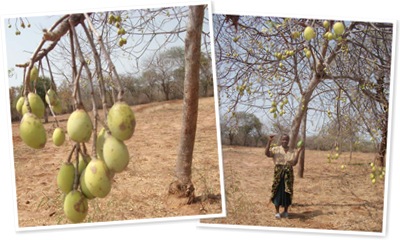When Nyamai Kasikali started a Melia Volkensii plot ten years back, he never knew the potential of the project. Years later; he is making a stable income from the venture. Melia Volkensii is a tree species of the family meleaceae that grows in arid and semi arid areas. It requires minimal amount of rainfall. Locally, it is known as Mukau.
A melia tree
I was trained by the Kenya Forest Services (KFS ) on how to propagate and manage the species and started implementing the same on my farm,’’ says Kasikali.
According to the Kenya Forestry Research Institute (KEFRI), a mature Melia tree takes twelve (12) years to mature.
But Kasikali says that he harvests his trees at the age of 8 years.’’ An 8 year old melia tree fetches me around Kshs.10, 000 in income,’ he says adding that he also has a nursery for melia volkensii seedlings.
Mukau is harvested for timber and products made from its timber are of high quality hence very expensive. Melia seeds are also consumed by goats
Mr Kasikali also has a tree nursery where he raises a variety of trees chief among them melia volkensii.‘‘Melia Volkensii seedlings are very profitable in that one (1) seedling goes for as much as Kshs.100’’ he says
Future plans
Currently, Mr.Kasikali has a melia plot where he has planted sixty (60) trees of the species but he says that he plans to plant more so as to increase his income.





